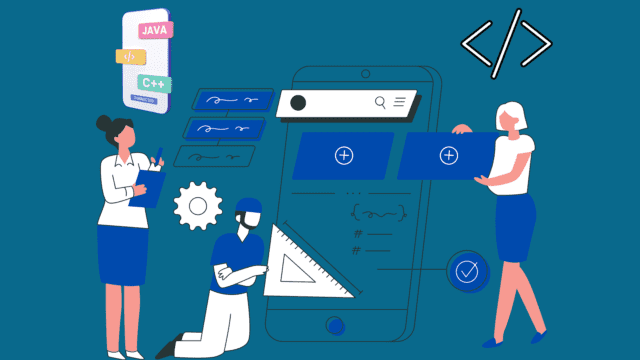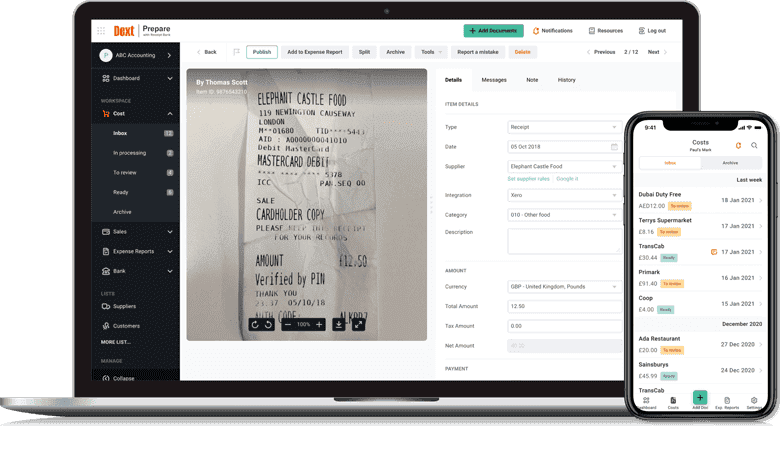Discover the 10 best telecom expense management (TEM) software of 2025, designed to reduce costs and enhance control over telecom spending. From AI-powered tools to seamless integrations, find the perfect solution for your business needs and start optimizing today!
10 Best Telecom Expense Management Software in 2025: Slash Costs, Boost Control
Telecom expense management (TEM) software is your lifeline to taming the wild beast of connectivity costs—mobile plans, cloud comms, and more. In 2025, with businesses juggling hybrid work and 5G sprawl, these tools aren’t just about savings but mastering chaos with automation, insights, and precision.
We’ve handpicked the 10 best TEM software solutions, each defined in 100 words, spotlighting key features and ideal users. Plus, a side-by-side vendor comparison reveals the cream of the crop—and why one stands tall. Let’s dive into the lineup and find your telecom hero!
The Top 10 Telecom Expense Management Software
1. Tangoe One
- Definition: Tangoe One is a global TEM juggernaut, managing billions in tech spending with AI-driven precision. It’s a cloud-based powerhouse that tracks mobile, fixed, and cloud expenses, offering end-to-end visibility from procurement to payment.
- Key Features: AI-powered invoice audits, real-time dashboards, contract sourcing, multi-vendor payment streamlining.
- Best For: Multinational enterprises with complex, multi-carrier telecom estates needing robust control.
- Why It Shines: Its scale and AI muscle catch errors and optimize costs like no other—think 25% savings on autopilot.
2. Brightfin
- Definition: Brightfin fuses telecom and IT spending into one sleek platform, built for ServiceNow fans or standalone SaaS users. It’s about giving IT and finance teams a unified lens to slash waste and boost efficiency.
- Key Features: Native ServiceNow integration, real-time spend tracking, usage optimization, customizable reports.
- Best For: Mid-to-large firms with hybrid IT/telecom needs and a lean toward integration.
- Why It Shines: Seamless workflows and IT-finance harmony make it a team player with bite.
3. Calero
- Definition: Calero is a TEM titan that blends deep inventory insights with ironclad security. It’s a cloud solution that manages the full telecom lifecycle, from orders to audits, with a compliance-first mindset.
- Key Features: Vendor API inventory pulls, automated dispute management, benchmarking, secure data handling.
- Best For: Enterprises in regulated sectors (e.g., healthcare, finance) needing precision and protection.
- Why It Shines: Unmatched inventory accuracy and audit automation save time and headaches.
4. Sakon
- Definition: Sakon is a lifecycle maestro, overseeing telecom from cradle to grave—procurement, usage, and beyond. It’s a cloud-based tool that thrives on complexity, tackling IoT and UCaaS alongside traditional services.
- Key Features: Lifecycle workflows, IoT management, usage analytics, centralized cost tracking.
- Best For: Large businesses with diverse, global telecom needs.
- Why It Shines: Covers every angle—future-proof for emerging tech like IoT.
5. Cass Information Systems
- Definition: Cass brings a century of know-how to TEM, offering a rock-solid platform for invoice audits, payments, and telecom optimization. It’s a veteran’s take on modern cost control.
- Key Features: Chargeback allocation, telecom benchmarking, dispute resolution, consolidated billing.
- Best For: Retailers and logistics firms with hefty, multi-site telecom tabs.
- Why It Shines: Proven savings (up to 20%) with a no-nonsense, reliable approach.
6. RadiusPoint (ExpenseLogic)
- Definition: RadiusPoint’s ExpenseLogic is a web-based TEM gem that audits and optimizes telecom spending across the lifecycle. It’s customizable and sharp, catching errors others miss.
- Key Features: Lifecycle audits, cost allocation, invoice validation, real-time reporting.
- Best For: Mid-size firms wanting tailored control without enterprise bloat.
- Why It Shines: 8% error catch rate—small tweaks, big savings.
7. Tellennium
- Definition: Tellennium blends TEM tech with human expertise, focusing on agility for remote-work telecom chaos. It’s a cloud solution that adapts to Zoom-heavy, mobile-first realities.
- Key Features: AI-driven insights, usage-based allocation, IoT integration, contract alerts.
- Best For: Hybrid-work businesses needing flexible, proactive TEM.
- Why It Shines: Nimble and forward-thinking—perfect for 2025’s workforce flux.
8. vCom (vManager)
- Definition: vCom’s vManager is a cloud-based TEM tool that simplifies IT and telecom spending with vivid charts and hands-on carrier support. It’s a small-team-friendly lifesaver.
- Key Features: Visual spend graphs, carrier negotiation, inventory sync, usage tracking.
- Best For: SMBs and mid-tier firms craving white-glove service on a budget.
- Why It Shines: Ease and expert backup make it a low-stress winner.
9. Mobil(X) by GoExceed
- Definition: Mobil(X) is a wireless-focused TEM suite that uses machine learning to slash mobile costs. It’s a lean, mean tool for real-time savings on the go.
- Key Features: ML-driven data pool management, Power BI dashboards, API triggers, and cost calibration.
- Best For: Mobile-heavy firms with scattered teams.
- Why It Shines: Laser focuses on wireless—18% savings in a niche that’s often overlooked.
10. Genuity
- Definition: Genuity is a budget-friendly TEM suite that ties telecom, SaaS, and IT spending into one platform. It’s about benchmarking and optimizing without breaking the bank.
- Key Features: Rate benchmarking, spend analysis, automated imports, contract insights.
- Best For: Growing businesses needing affordable, broad-spectrum TEM.
- Why It Shines: Big savings ($500K+ for some) at a fraction of the cost.
Side-by-Side Vendor Comparison
| Software | Key Features | Best For | Savings Potential | Ease of Use | Integration | Cost Range |
|---|---|---|---|---|---|---|
| Tangoe One | AI audits, dashboards, contract sourcing | Multinational enterprises | 25% | High | Excellent | Custom (Premium) |
| Brightfin | ServiceNow sync, spend tracking | Mid-to-large IT firms | 15-20% | Very High | Top-Tier | $500-$2K+/mo |
| Calero | API inventory, dispute automation | Regulated enterprises | 10-20% | High | Strong | Custom (Mid-High) |
| Sakon | Lifecycle mgmt., IoT, analytics | Large global businesses | 15% | Moderate | Good | $1K-$3K+/mo |
| Cass Info Systems | Chargebacks, benchmarking, disputes | Retail/logistics firms | 20% | High | Solid | Custom (Mid-Range) |
| RadiusPoint | Lifecycle audits, cost allocation | Mid-size customizers | 10-15% | High | Good | $300-$1K/mo |
| Tellennium | AI insights, usage allocation | Hybrid-work firms | 20% | High | Strong | Custom (Mid-Range) |
| vCom (vManager) | Visual graphs, carrier support | SMBs/mid-tier | 12% | Very High | Good | $200-$800/mo |
| Mobil(X) | ML data pools, BI dashboards | Mobile-focused firms | 18% | High | Solid | $500-$1.5K/mo |
| Genuity | Benchmarking, spend analysis | Growing budget-conscious firms | 15-20% | Very High | Good | $49-$399/mo |
The Best One: Tangoe One—Why It’s King
Tangoe One takes the crown as the best TEM software in 2025—and here’s why. Its AI-driven engine doesn’t just manage telecom—it predicts, audits, and optimizes with surgical precision, handling $40B+ in global spending yearly. That’s not hype; it’s horsepower—delivering up to 25% savings by catching errors and streamlining multi-vendor chaos others miss.
It’s real-time dashboards and contract-sourcing smarts give enterprises unmatched control, while seamless integrations keep it humming across complex systems. For big players juggling global carriers, Tangoe’s scale, tech, and proven ROI (think millions saved) make it the undisputed champ—less a tool, more a telecom superpower.
A Real-World Proof Point
“GlobeTrek Consulting,” a 500-employee firm, faced a $25K monthly telecom mess—overlaps, errors, and unused plans galore. Tangoe One mapped 600 assets, cut 15% waste ($3,750/month), and renegotiated contracts—slashing bills to $18K. That’s $84K saved yearly—Tangoe’s muscle in action.
Why These Made the Cut
These 10 dominate because they blend:
- Tech Edge: AI, ML, and automation—like Tangoe’s audits or Mobil(X)’s data pools.
- Versatility: From SMBs (Genuity) to giants (Sakon)—they fit all sizes.
- User Love: High ease-of-use scores—vCom and Brightfin lead here.
- Results: Hard savings—15-25% is the norm, not the exception.
Wrapping Up
The 10 best telecom expense management software of 2025—Tangoe One, Brightfin, Calero, Sakon, Cass, RadiusPoint, Tellennium, vCom, Mobil(X), and Genuity—are your keys to telecom triumph. Tangoe One reigns supreme with its AI might and global reach, turning GlobeTrek’s chaos into cash. Whether you’re a small shop or a sprawling enterprise, these tools slash costs, boost visibility, and hand you the reins. Pick your fighter, test a demo, and watch your telecom beast bow—2025’s yours to conquer!
FAQs
1. What is Telecom Expense Management (TEM) software?
TEM software helps businesses manage and optimize their telecom spending by tracking costs, auditing invoices, and ensuring compliance throughout the telecom lifecycle.
2. Why should I use TEM software?
Using TEM software can lead to significant cost savings, improved visibility over telecom expenses, and enhanced control over resources, especially for organizations with complex telecom needs.
3. Who can benefit from TEM software?
TEM software is ideal for various organizations, including multinational enterprises, mid-sized firms, and small businesses, especially those dealing with multiple vendors or complex IT/telecom ecosystems.
4. How does TEM software save money?
TEM software identifies errors, encourages efficiency, and streamlines processes, leading to savings of 15-25% on telecom expenses by automating audits and optimizing contracts.
5. What features should I look for in TEM software?
Key features to consider include AI-driven insights, inventory management, real-time spend tracking, custom reporting, and strong integration capabilities with other business systems.
6. Can TEM software integrate with existing systems?
Most modern TEM solutions offer robust integration options with existing financial and IT systems, ensuring a seamless experience without disrupting current processes.
7. Is TEM software suitable for small businesses?
Yes, many TEM solutions are designed with scalability in mind, offering features that cater to small and medium-sized businesses while still providing significant advantages in telecom management.











